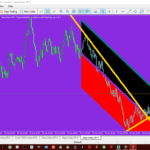Many people are intrigued by the stock market and its ability to produce huge profits. The thrill of making money on the stock market, however, can be dangerous. The stock market is filled with scams and fakes, and unfortunately, some people fall into these scams as well. It is important for investors to understand how the stock market works in order to avoid being taken advantage of by scam artists. This article will give you a basic understanding of how the stock market works and provide some tips on how to avoid scams when investing.
First off, it is important to understand how the stock market works. The basics. When investors buy or sell shares of stock, they do so based on speculation that the prices will rise or fall. If an investor believes that the price will rise, he/she will buy more shares. If an investor believes that the price will fall, he/she will sell those shares. The investors need both support and resistance in order to make their investment trades work.
There are many different exchanges, or markets, to invest in. One of the most well known markets is the New York Stock Exchange or NYSE. NYSE consists of stock exchanges for publicly traded companies and is the largest in the United States. Other large exchanges include NASDAQ and the London Stock Exchange.
Investors can trade shares of stock through a broker, via phone, or by going to their local brokerage. Investors can buy and sell shares of a company that is publicly traded, or invest in a company that is in the process of publicly trading. No matter how investors choose to invest, they must understand how the stock market works in order to get the most out of their investment decisions. Since different companies have differing qualities, they each require different investments. When investors are able to analyze the differences between stocks, they have a better chance of making informed investments.
Some people believe that when investors invest in a mutual fund or exchange-traded fund, they are investing in the same thing as other investors; that they are buying a “pass-through” interest. However, this is not the case. Mutual funds are managed by professional investors who do not represent only one company. Investors who buy mutual funds can make much better use of their time and money by investing in smaller, more profitable stocks, and selling shares of their portfolios to other investors if they wish.
There are two types of stock market investing: long-term bull markets and bear markets. Long-term bull markets see an overall increase in prices for certain companies. Bear markets are marked by sudden decreases in prices for certain companies. Long-term bear markets generally do not last longer than three months. The main problem with these markets is that they tend to be driven by supply and demand forces.
Investing in stock markets is more complicated when compared to the buying and selling of shares on the stock market works. Long-term investors must be prepared to monitor the ups and downs of any particular company or industry. They also need to learn how the share price fluctuations affect the value of the portfolio.
A good example of the complexity of the underlying asset is the Dow Jones Industrial Average. Traders purchase large quantities of shares and then trade the shares among themselves on specific indexes. Dow Jones indexes are essentially a compilation of the largest companies that are traded on major exchanges. Because no two stock markets are the same, investors must monitor the changes of the Dow Jones Indices daily.





